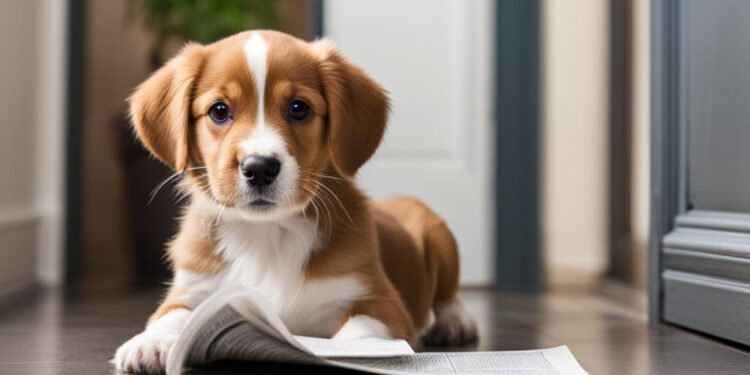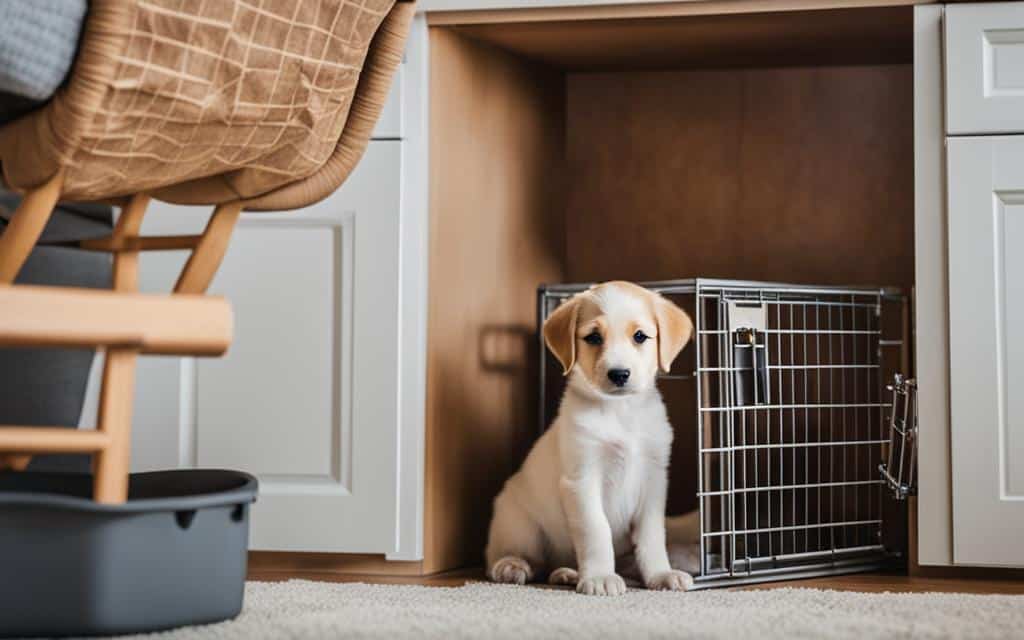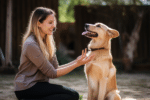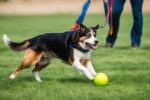No More Accidents: Successful Housetraining for Puppies

If you’re a puppy owner, you know that housetraining can sometimes feel like a daunting task. But fear not! With the right approach and a little patience, you can successfully train your furry friend to become a potty pro. In this article, we will provide you with essential housetraining tips for puppies, covering everything from establishing a routine to crate training.
According to the American Society for the Prevention of Cruelty to Animals (ASPCA), housetraining puppies can take anywhere from a few weeks to several months. It’s crucial to be prepared for the journey ahead and create a positive environment for your puppy to thrive in.
One of the first steps in successful housetraining is establishing a routine for your puppy. By setting consistent feeding times and regular bathroom breaks, you can help your puppy develop good habits and eliminate accidents. Creating a routine also helps regulate their bowel movements, making the housetraining process more predictable.
Crate training can be an invaluable tool in housetraining your puppy. It teaches them to hold their bladder and bowels until they are taken outside. By introducing the crate gradually and using positive reinforcement, you can create a safe and comfortable space for your puppy while aiding in their housetraining journey.
Remember, accidents are bound to happen during the housetraining process. Stay patient and avoid punishment, as it can create anxiety and hinder progress. Instead, focus on positive reinforcement by praising and rewarding your puppy when they eliminate in the designated area.
By following these essential housetraining tips, you can pave the way for a well-behaved and housebroken puppy. Consistency, patience, and positive reinforcement will be your keys to success. Stay tuned for the next sections, where we will delve deeper into establishing a routine for your puppy and the benefits of crate training.
Establish a Routine for Your Puppy
When it comes to housetraining your puppy, one of the most important aspects is establishing a routine. Puppies thrive on consistency and having a set schedule can greatly aid in their potty training efforts. Here are some tips to help you establish a routine for your furry friend:
1. Set Regular Feeding Times
Feeding your puppy at the same times each day can help regulate their bowel movements. This makes it easier for you to anticipate when they will need to go outside to eliminate. Stick to a consistent feeding schedule and avoid free-feeding, where food is available to your puppy all day long.
2. Schedule Regular Bathroom Breaks
Take your puppy outside to eliminate after they wake up in the morning, after meals, and right before bedtime. This helps them get into the habit of going potty at specific times. By taking them out consistently, you’re helping them understand that outside is the designated area for doing their business.
3. Designate a Bathroom Area
Choose a specific area in your yard where you want your puppy to go potty. Take them directly to this spot every time they need to eliminate. The familiar scent will encourage them to go there and reinforce the desired behavior.
4. Limit Their Access
Until your puppy is reliably housetrained, it’s best to limit their access to the house. You can use baby gates or a crate to confine them to a smaller area. This helps prevent accidents and allows you to supervise them more closely.
By establishing a routine for your puppy, you are providing them with a structure that makes housetraining easier and more effective. Remember to be patient and consistent throughout the process, and soon your puppy will become a pro at going potty in the right place.
Crate Training for Housetraining Success
Crate training is an effective method for housetraining puppies, teaching them to hold their bladder and bowels until they are taken outside. By creating a positive association with the crate, your puppy will see it as a safe and comfortable space.
When selecting a crate for your puppy, choose one that is just big enough for them to stand, turn around, and lie down comfortably. This will help prevent them from eliminating in one corner and sleeping in another.
To introduce the crate, use positive reinforcement techniques such as treats and praise. Place a soft blanket or bedding inside to make it cozy. Leave the door open and allow your puppy to explore the crate at their own pace. Gradually increase the amount of time they spend inside, always rewarding them for going in willingly.
After your puppy has been in the crate for a period of time, take them outside immediately to their designated bathroom area. This will reinforce the connection between being in the crate and going outside to eliminate. Keep in mind that puppies have small bladders and will need frequent bathroom breaks.
| Crate Training Tips |
|---|
| Choose a crate that is the right size for your puppy. |
| Introduce the crate gradually, using positive reinforcement. |
| Take your puppy outside to eliminate immediately after being let out of the crate. |
| Avoid using the crate as a form of punishment. |
With patience and consistency, crate training can be a valuable tool in your puppy’s housetraining journey. Remember to always reward your puppy for eliminating in the designated area and avoid punishment for accidents. Soon enough, your puppy will become a well-behaved and housebroken member of the family.
Conclusion
Housetraining puppies is a process that requires patience, consistency, and positive reinforcement. By establishing a routine and using crate training, you can expedite the housetraining process and ensure the success of your puppy’s training.
Remember to reward your puppy with praise and treats when they eliminate in the designated area. This positive reinforcement will reinforce the desired behavior and motivate your puppy to continue eliminating in the appropriate place.
It’s important to avoid punishment for accidents during the housetraining process. Punishment can create anxiety and fear, making the training process more difficult. Instead, stay patient and understand that accidents are a normal part of the learning process.
With time and consistent training, your puppy will become a well-behaved family member, fully housetrained and a joy to have in your home. By providing proper care and following these housetraining tips, you can set your puppy up for success and enjoy a harmonious relationship for years to come.
FAQ
How long does housetraining a puppy typically take?
According to the ASPCA, housetraining puppies can take anywhere from a few weeks to several months.
How do I establish a routine for my puppy?
Start by setting regular feeding times and taking your puppy outside for bathroom breaks at consistent intervals.
Can crate training help with housetraining?
Yes, crate training can be a useful tool in housetraining as it teaches puppies to hold their bladder and bowels until they are taken outside.
How should I reward my puppy during housetraining?
Positive reinforcement is key to successful housetraining. Reward your puppy with praise and treats when they eliminate in the designated area.
What should I do if my puppy has an accident?
Accidents are bound to happen, so stay patient and avoid punishment. Punishment can create anxiety and make the training process more difficult.
Why is establishing a routine important for housetraining?
Puppies thrive on routine, so setting a consistent schedule for feeding, bathroom breaks, and playtime helps expedite the housetraining process.
When should I take my puppy outside to eliminate?
Take your puppy outside after waking up, after meals, and before bed to encourage elimination in the designated area.
How do I introduce crate training to my puppy?
Choose a crate that is just big enough for your puppy to stand, turn around, and lie down comfortably. Introduce the crate gradually and use positive reinforcement to create positive associations.
Can I use the crate as a punishment for my puppy?
No, the crate should be a safe and comfortable space for your puppy. Avoid using it as punishment and instead focus on creating positive associations.
What is the key to successful housetraining for puppies?
Patience, consistency, and positive reinforcement are key to successful housetraining. Establishing a routine and using crate training can help expedite the process.
Will my puppy eventually become well-behaved with consistent training?
Yes, with time and consistent training, your puppy will become a well-behaved member of your family.







